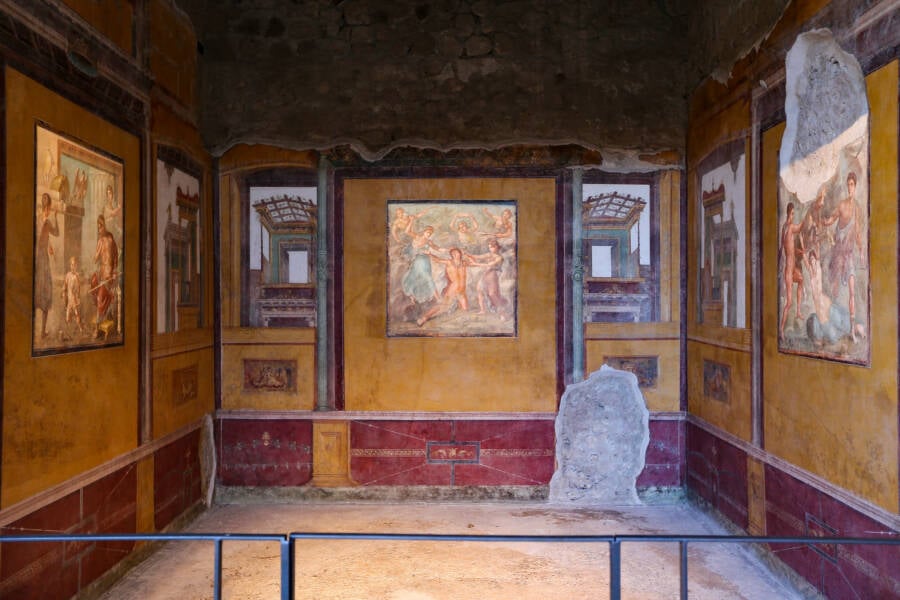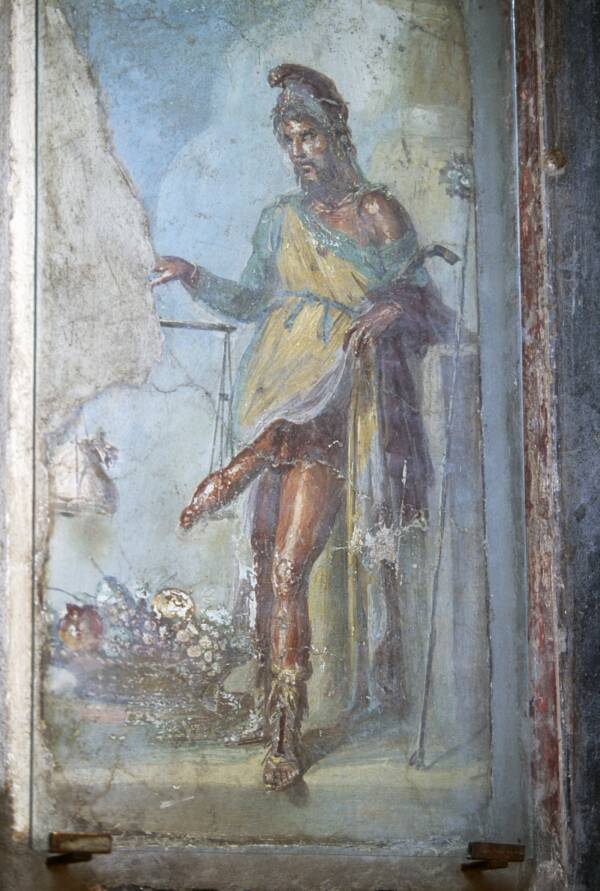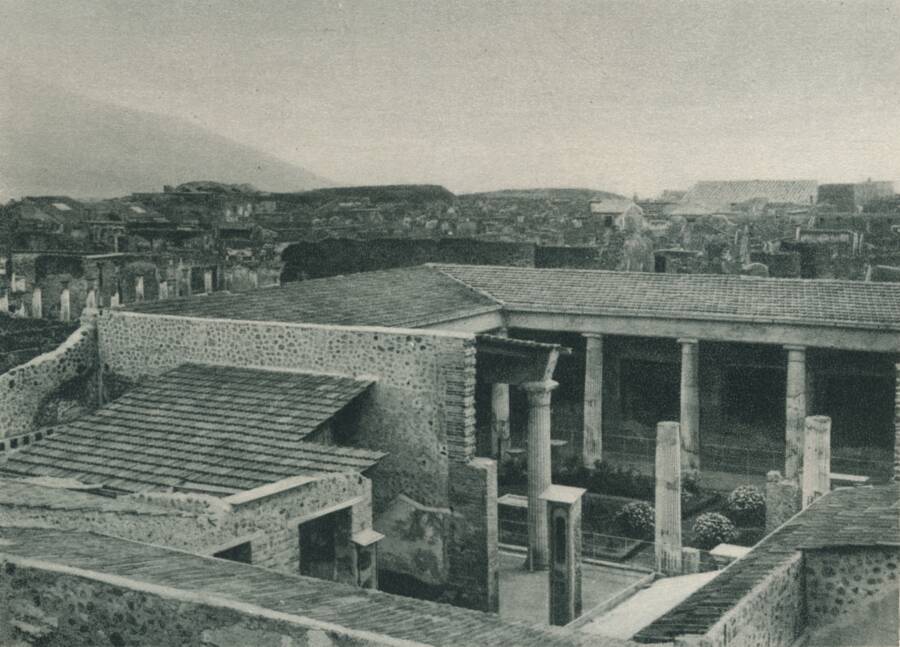The House of the Vettii was buried by the eruption of Mount Vesuvius in 79 C.E. but has been restored to its former glory after 20 years of meticulous restoration work.

Marco Cantile/LightRocket via Getty ImagesRestored frescoes in the House of the Vettii.
Almost 2,000 years ago, Mount Vesuvius erupted and smothered the Roman town of Pompeii. Now, thanks to meticulous restoration efforts that lasted two decades, one of the doomed town’s most opulent homes, the House of the Vettii, has been brought back to life.
“This is the house which tells the story of Roman society,” Gabriel Zuchtriegel, the director of Pompeii archaeological park, told The Guardian.
As the Associated Press reports, the house once belonged to two former slaves, Aulus Vettius Conviva and Aulus Vettius Restitutus, who became rich wine traders after they were freed. Perhaps in an attempt to solidify their place in Roman society, they filled their sprawling home with fine art.
“They evidently tried to show their new status also through culture and through Greek mythological paintings,” Zuchtriegel told the Associated Press, “and it’s all about saying, ‘We’ve made it and so we are part of this elite.’”

Marco Cantile/LightRocket via Getty ImagesElaborate frescoes line the walls in the House of the Vettii.
The Guardian reports that the House of the Vettii was located in one of Pompeii’s wealthy neighborhoods. The property included statues, gardens, fountains, vibrant — and sometimes erotic — frescoes, and even a brothel.
One fresco depicts Priapus, the god of fertility and abundance, with a large phallus balancing on a scale opposite a bag full of money. Another depicts Hercules as a child crushing two snakes, which according to the Daily Mail, may have been a nod to Aulus Vettius Conviva and Aulus Vettius Restitutus’ ability to surmount challenges as former slaves during their lives.
“The House of the Vetti is like the history of Pompeii and actually of Roman society within one house,” Zuchtriegel explained to the Associated Press, raving over the small details in each fresco. “So, you have this mixture: nature, architecture, art. But it is also a story about the social life of the Pompeiian society and actually the Roman world in this phase of history.”

DeAgostini/Getty ImagesOne of the most astounding frescoes in the House of the Vettii is of the Roman god Priapus and his large phallus.
Though some have hypothesized that Aulus Vettius Conviva and Aulus Vettius Restitutus were brothers, Zuchtriegel thinks that’s unlikely. He believes that they were simply enslaved by the same master and that they bonded while in servitude together.
“If they were from the same family the first two names would have been different and they would have the same surname,” Zuchtriegel explained to The Guardian. “It was uncommon to have biological siblings who were slaves and then set free because family ties were cut with slavery so it’s very unlikely they were brothers. It’s more likely that they were buddies during their time as slaves and then set free.”
However they knew each other, Aulus Vettius Conviva and Aulus Vettius Restitutus may have met the same fate as thousands of others living in Pompeii at the time. As HISTORY reports, an estimated 2,000 people died in Pompeii following the eruption of Mount Vesuvius in 79 C.E., which likely killed around 16,000 people in the towns and villages nearby.

Print Collector/Getty ImagesThe House of the Vettii photographed in Pompeii in 1927. It was rediscovered in the 19th century after being buried by Mount Vesuvius.
According to The Guardian, the explosion buried the House of the Vettii and all its treasures. Over a thousand years later, in the late 19th century, the opulent estate was rediscovered during excavations in Pompeii.
Though Pompeii has been plagued with “bureaucratic neglect,” flooding, and artifact thieves, according to the Associated Press, there has been a concerted effort to restore the House of the Vettii over the past two decades. Now, the opulent home has been revived. Its frescoes, statues, and gardens offer a compelling image of what life was like for elite Romans.
Zuchtriegel told The Guardian that the abundance of treasures within the House of the Vettii is “absolutely astonishing.” He noted that if he were in Pompeii for a day, with time to visit just one of the doomed city’s ancient houses, the House of the Vettii is the one he would choose.